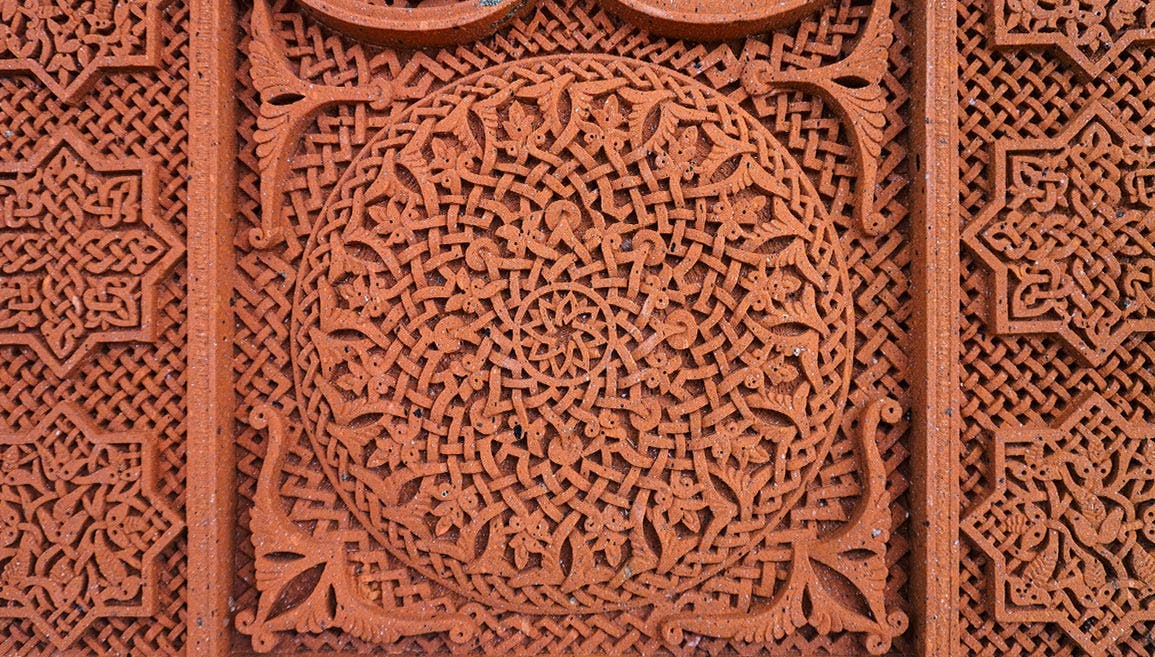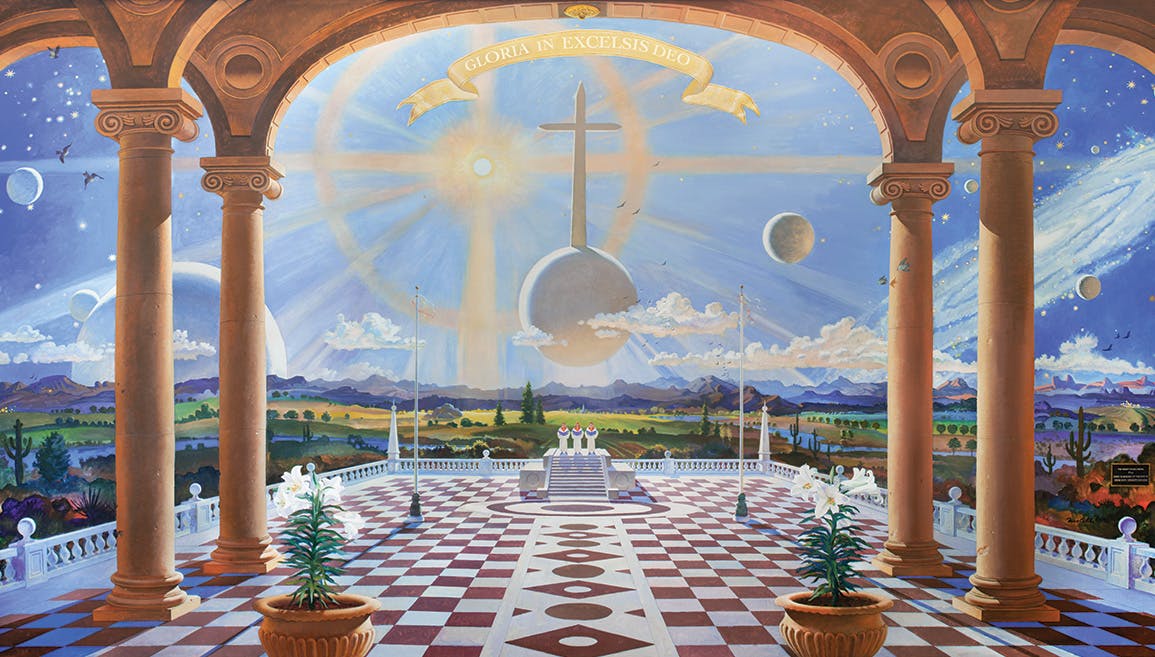Yom Va-Yosha and the Song of the Sea
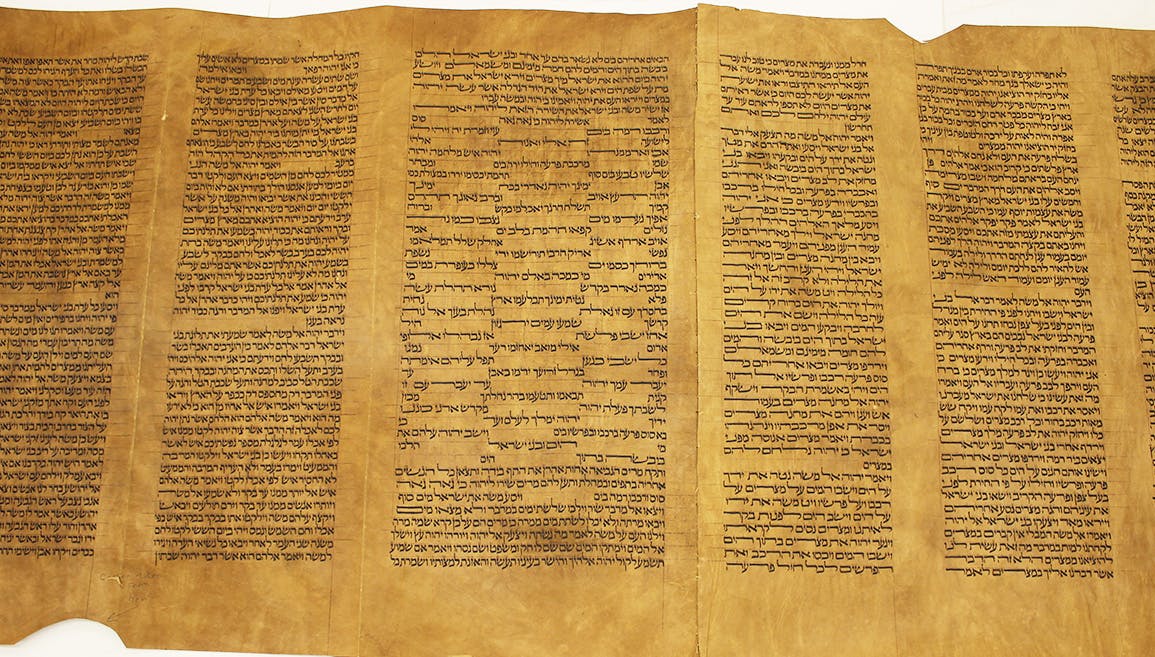
The upcoming Jewish holiday of Passover, celebrated from April 5–13, commemorates the exodus from Egypt and the liberation of the Israelites from Egyptian slavery. The holiday is described in many biblical verses, including Leviticus 23:5–8:
In the first month, on the fourteenth day of the month, at twilight, there shall be a passover offering to the LORD, and on the fifteenth day of that month the LORD’s Feast of Unleavened Bread. You shall eat unleavened bread for seven days. On the first day you shall celebrate a sacred occasion: you shall not work at your occupations. Seven days you shall make offerings by fire to the LORD. The seventh day shall be a sacred occasion: you shall not work at your occupations.
To this day, Jewish law dictates that for the week of the Passover festival, no leavened products may be eaten. The observance of the first night (and second night as well in the diaspora) is well known: a ritual meal known as a seder is held, and the story of the exodus is retold. However, non-Jews are far less aware of the observance of the seventh day of Passover, which is also “a sacred occasion” during which one is supposed to abstain from work.
In rabbinic tradition, the seventh day of Passover is understood to be the anniversary of the miracle of the splitting of the Reed Sea.[1] For this reason, the liturgical Torah reading for the holiday is the narrative of the splitting of the sea and the “Song of the Sea” which follows it. Historically, the seventh day of Passover was often called Yom Va-Yosha, or “The Day of Delivered,” after the first word of the biblical narrative of the splitting of the sea in Exodus 14:30, but this name has fallen into disuse.
Another ancient tradition observed far less often in Jewish communities today is the recitation of special liturgical poetry during prayer services. These poems, called piyyutim, were common on most sabbaths and festivals, with different poems recited for each weekly portion or the holiday. The poetry would contain sophisticated and complex references to the relevant biblical text and its rabbinic interpretation, praising God for saving the Israelites and vanquishing their enemies.

Figure 1: Image of Israelites on the shore of the Reed Sea before it splits, from Prague Haggadah PBK.003090.
The “Song of the Sea” is of central importance both to these poems and to the celebration of Passover as a whole, because it is understood to be the song of praise that the Israelites themselves sang in response to God’s miraculous act of redemption. The song is also treated specially in the text of the Torah. While most of the Torah is written in solid lines, with occasional paragraph breaks, the “Song of the Sea” has a special layout. In the Babylonian Talmud (Tractate Megilla 16b), Rabbi She’eila of Kefar Timrata is quoted as saying, “All of the passages of biblical song are written as half bricks arranged upon whole bricks and whole bricks arranged around half bricks.”
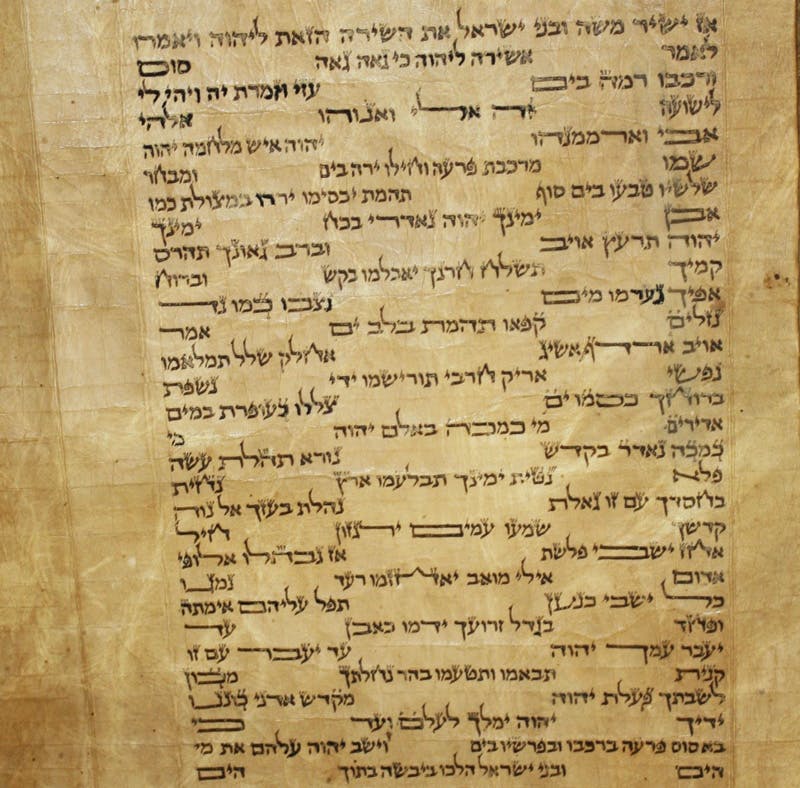
Figure 2: Image of the “Song of the Sea” in SCR.000748.
This special layout, unique in the Torah, though with a parallel in the “Song of Devorah” (Deborah in English translations) in Judges 5, requires the exact content of each line be specifically prescribed in order to maintain its uniformity. However, different communities have created slightly different layouts. See the examples below.
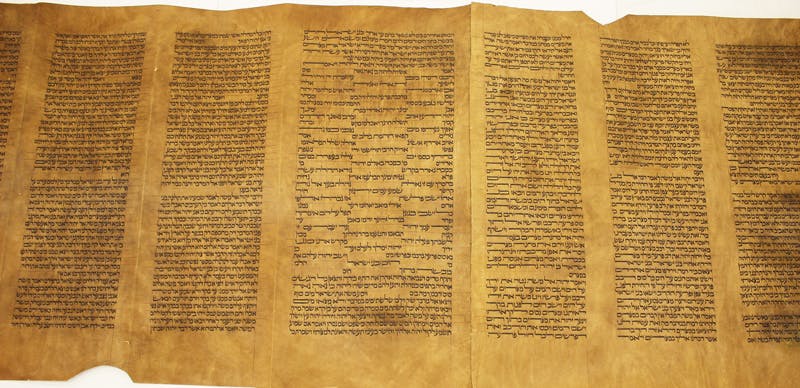
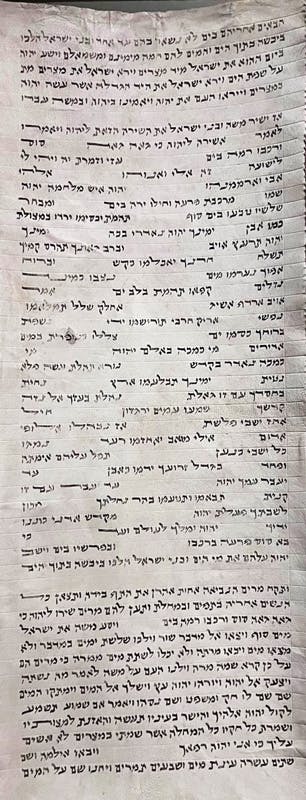
Figures 3 and 4: Examples of two different layouts for the "Song of the Sea"
The Dead Sea Scrolls do not contain the “brick by brick” layout of the song, for example, though the oldest known Torah scroll fragments do. We can see evidence of this evolution in one of the scrolls in the Museum Collections, SCR.004820 (see image below), which comes from Germany and dates to around 1250. In the medieval tradition of central Europe, the last two lines of the song were not written in the “brick by brick” style. In SCR.004820, however, you can see how the original layout was continuous—in line with medieval tradition in central Europe—but it has been corrected to the “brick by brick” layout. This is evidence that the community using the scroll decided the older layout was incorrect, and so they “fixed” it.
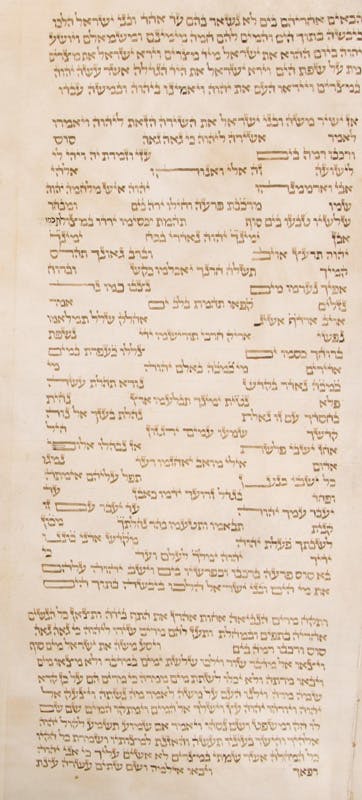
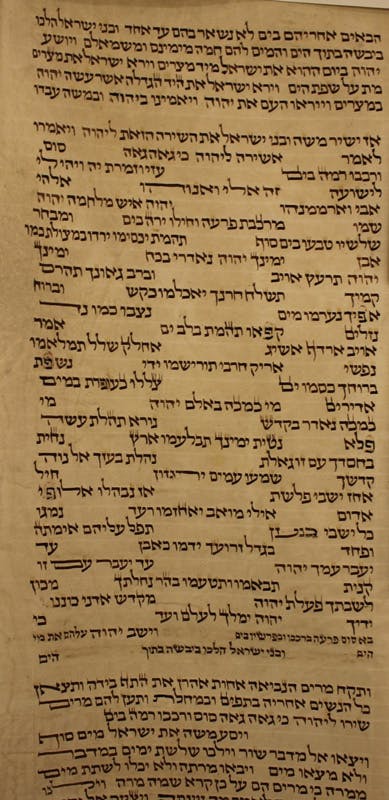
Figures 5 and 6: Images of SCR.001181 with the last two lines continuous, next to SCR.004820 with the corrected layout.
In addition, the most common version of the layout contains a visual pun to represents the physical moment of redemption. The last line of the song is broken up into three sections of text: the “waters of the sea,” the dry land the Israelites walked on within, and “the sea” again. The layout of the text thus represents the Israelites walking on dry land with the sea on both sides.

Figure 7: Last line of the "Song of the Sea" in SCR.001646.
Though many non-Jews are aware the holiday of Passover celebrates the exodus from Egypt, few know about the seventh day of Passover and its focus on the splitting of the sea. The significance of this event and the song that commemorates it can be seen in the historical focus on the layout of the text of the song itself. First, the development of the “brick by brick” style to denote the text as a special song, and then the change to the text’s final line to illustrate the miracle told in the song’s lyrics. This process can be seen in SCR.004820. It reminds us that even as the biblical text remains constant, the ways we engage with it change over time and place.
By Dr. Jesse Abelman, Curator of Hebraica and Judaica
1. The Hebrew name for the sea, ים סוף, is often translated as the Red Sea, and the Red Sea is known by that name in Modern Hebrew. However, it literally translates as Reed Sea, and the geography of the story makes it more likely that it refers to a different body of water than the Red Sea.

